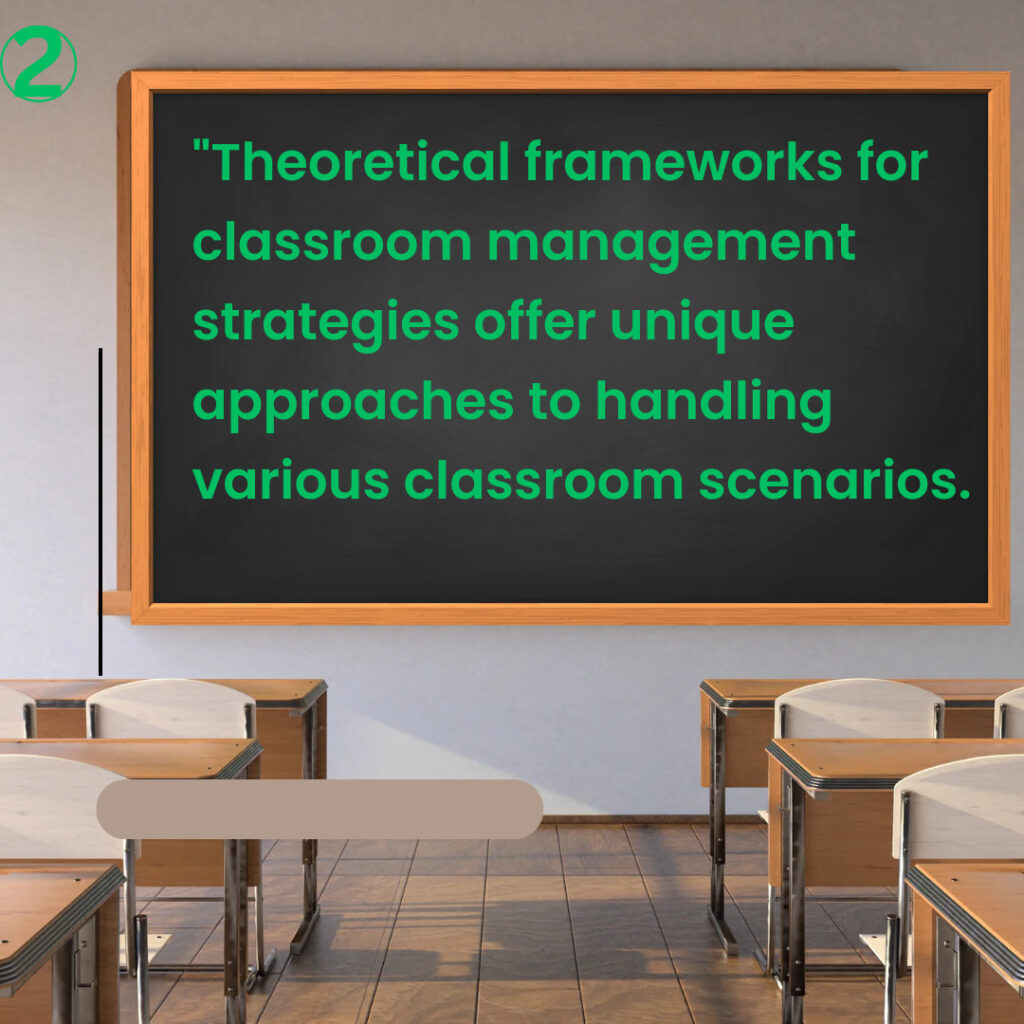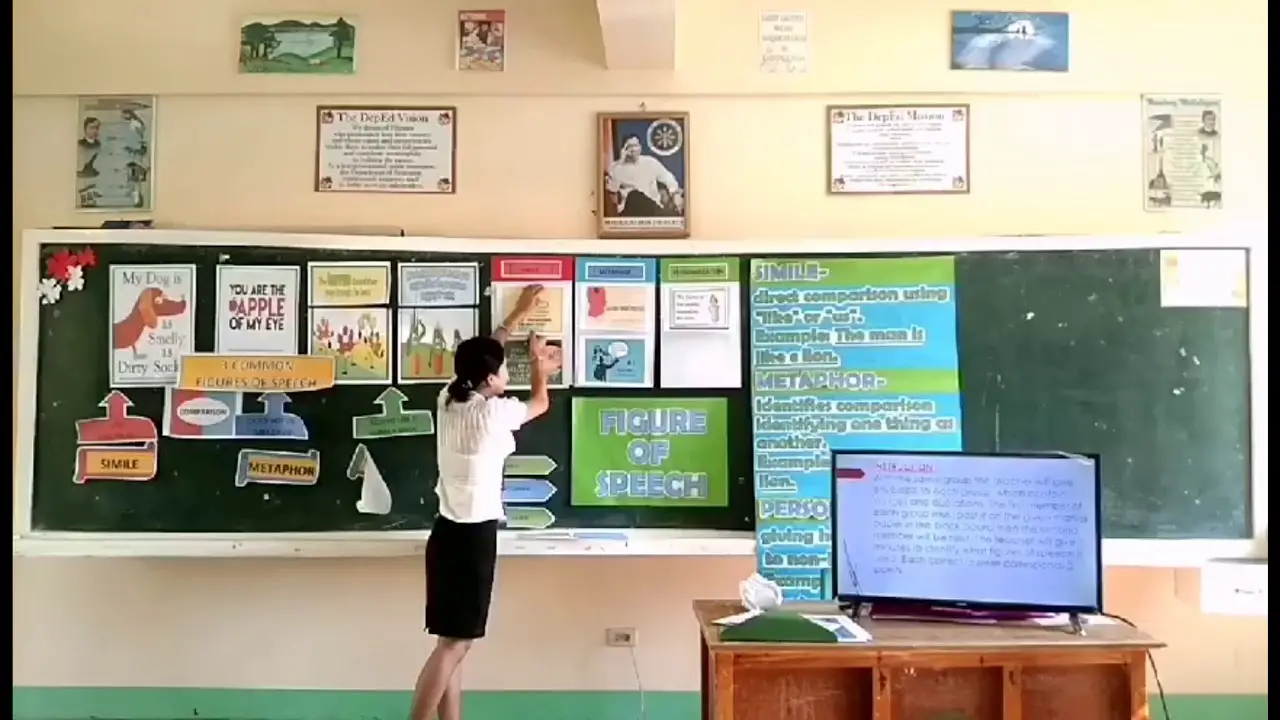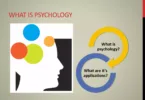Classroom management is a vital aspect of successful education and learning. It refers to the variety of skills and techniques teachers employ to keep students organized, orderly, focused, attentive, on task, and academically productive.
Imagine entering a classroom where students are engaged, noise is managed to constructive levels, and learning is the primary focus. That’s the quintessence of effective classroom management. This core concept is not solely about enforcing rules and discipline but creating an environment conducive to learning and growth.
INTRODUCTION TO CLASSROOM MANAGEMENT
Classroom management is a multifaceted practice that involves both proactive and reactive strategies. Proactive strategies refer to teachers’ methods to promote positive behavior, while reactive methods include measures taken to correct inappropriate behavior. Classroom management, therefore, encompasses everything from the physical layout of the classroom and the establishment of rules and routines to the fostering of relationships and the maintenance of an engaging and respectful learning environment.
Effective classroom management plays a vital role in enhancing students’ learning. It paves the way for the teacher to engage the students in education, making the teaching process more effective.
Importance of Effective Classroom Management
Classroom management is a crucial element in ensuring an effective learning environment. It directly influences the teacher’s capacity to teach and the student’s learning opportunity, significantly impacting academic performance and overall classroom climate.
Firstly, effective classroom management creates an environment conducive to teaching and learning. It sets a positive classroom climate by establishing order and a sense of belonging among students. This positive climate fosters a learning culture where students feel safe, respected, and eager to participate, enhancing their academic engagement and performance.
Secondly, classroom management plays a critical role in minimizing disruptions. Teachers can manage and mitigate potential disruptive behaviors by setting clear expectations, enforcing consistent rules, and maintaining routine procedures. This maximizes instructional time, improves student behavior, and creates a conducive learning atmosphere.
Thirdly, classroom management facilitates the social and emotional growth of students. A well-managed classroom provides opportunities for students to interact socially and build relationships with each other. It also aids in developing students’ emotional intelligence as they learn about respect, empathy, cooperation, and responsibility within the classroom community.
Finally, effective classroom management is integral to the teacher’s well-being. A well-managed classroom reduces the stress and burnout associated with managing disruptive behavior. This allows teachers to focus their energy on the core task – instruction and student learning.
Summary: Classroom Management can transform a chaotic classroom into a vibrant learning community when executed effectively. It’s a dynamic process, full of challenges and rewards, that extends beyond maintaining order at the school. It’s about establishing a nurturing environment where teachers can teach and students can learn, flourish, and excel. Effective classroom management is the cornerstone of successful education – it sets the stage for student engagement and learning, thereby creating a classroom where all students have the opportunity to succeed.
History and Evolution of Classroom Management
Early Concepts of Classroom Management
Historically, classroom management was primarily understood as maintaining order and discipline. The early educational setting was characterized by rigid rules, strict discipline, and teacher-centered instruction, where the teacher was the authority, and students were expected to comply.
The industrial revolution influenced the earliest approaches to classroom management in the late 19th and early 20th centuries. Classrooms, like factories, were designed to produce standardized outputs (students), and teachers were expected to maintain strict discipline to achieve these outcomes. The teacher was the authority figure, and the students were passive recipients of knowledge.
In the 1950s and 1960s, B.F. Skinner’s behaviorist model dominated the education system. Classroom management was based on rewards and punishments to shape students’ behaviors. Teachers used positive and negative reinforcements to increase desirable behavior and decrease inappropriate behavior.
Evolution and Current Trends
In the late 20th century, there was a paradigm shift in the approach toward classroom management, influenced by various theorists and models. Carl Rogers and Haim Ginott emphasized the importance of creating a positive classroom environment that fosters respect and empathy. They advocated for a student-centered approach, with the teacher acting as a facilitator rather than a dictator.
In the 1980s, William Glasser’s Choice Theory and Kounin’s ” with-it-ness ” model came to light. Glasser argued for a classroom environment where students have some control over their learning. He believed that meeting students’ needs and giving them a choice would lead to better behavior. On the other hand, Kounin focused on preventive discipline through effective classroom organization and management.
In the 21st century, the focus has shifted from teacher-centered to student-centered classrooms. Classroom management now encompasses more than discipline and order; it includes creating a positive, stimulating, and inclusive learning environment, fostering positive relationships, engaging students in meaningful learning, and developing their social and emotional skills.
With the advent of technology, modern classroom management also incorporates digital tools to enhance learning, engage students, and manage classroom dynamics effectively. Digital classroom management tools not only assist teachers in maintaining an organized and engaged classroom and cater to diverse student needs and learning styles.
Moreover, the current trends in classroom management also emphasize cultural responsiveness. As classrooms become increasingly diverse, teachers are required to incorporate practices that respect and respond to the cultural, racial, and ethnic diversity of students.
Summary: the evolution of classroom management from a control-and-command model to a more inclusive, learner-centered model mirrors the broader educational changes over the years. The modern approach to classroom management emphasizes creating a positive learning environment where students are actively engaged, feel safe and supported, and are empowered to take responsibility for their learning.
Theoretical Frameworks of Classroom Management
The theoretical frameworks of classroom management provide a lens to understand and implement effective strategies for a conducive learning environment.

Over the years, several theories have been proposed that lay the foundation of classroom management. These theories include the Behaviorist, Humanist, Cognitive, and Ecological Models.
Behaviorist Models of Classroom Management
Rooted in the work of B.F. The behaviorist approach to classroom management revolves around positive reinforcement, negative reinforcement, and punishment. Behaviorists believe that behavior is shaped by the consequences that follow it.
Positive reinforcement involves providing a desirable reward after behavior to increase the likelihood of the behavior being repeated. Negative reinforcement, on the other hand, involves removing an unpleasant stimulus to reinforce a positive behavior. Punishment, which can be positive (adding an undesirable consequence) or negative (removing a pleasant reinforcement), decreases unwanted behavior.
Classroom management strategies derived from behaviorism include token economies, behavior contracts, and response cost systems, all aimed at managing behavior through rewards and consequences.
Humanist Models of Classroom Management
Humanist models of classroom management, grounded in the work of Carl Rogers and Abraham Maslow, focus on the importance of considering students’ emotional and social needs within the classroom. They emphasize creating a classroom environment that fosters respect, empathy, and self-worth.
Humanist models propose that when students feel valued, respected, and safe, they are more likely to behave appropriately and engage in learning. These models advocate for student-centered learning, strongly emphasizing teacher-student relationships, social-emotional learning, and democratic classrooms where students have a voice.
Cognitive Models of Classroom Management
Cognitive classroom management models are based on the belief that students’ thoughts, ideas, and perceptions influence their behavior. These models, inspired by the work of Albert Bandura and William Glasser, stress the importance of teaching students self-regulation, problem-solving, and decision-making skills.
Cognitive models suggest that students behave appropriately when they know how to and when they believe their behavior makes a difference. This approach encourages teachers to engage students in goal setting, self-monitoring, and reflective thinking, fostering intrinsic motivation and self-directed learning.
Ecological Model of Classroom Management
Ecological models of classroom management view the classroom as a system of interconnected elements – students, teachers, physical environment, and instructional methods. The environmental perspective, advanced by theorists like Urie Bronfenbrenner and Rudolf Moos, suggests that changes in one part of the system affect the entire system.
From an ecological perspective, effective classroom management involves creating a structured yet flexible environment that promotes active learning. This approach considers the physical layout of the classroom, the social and emotional climate, and the instructional strategies used. It emphasizes the importance of a holistic approach, considering all elements of the classroom environment and their interaction.
Summary:
These theoretical frameworks offer different perspectives on classroom management. Each has its strengths and limitations, and most teachers use a combination of these approaches in their classrooms, adapting their strategies based on their student’s needs, the classroom environment, and their teaching style. Understanding these theories helps teachers develop a well-rounded approach to classroom management to create a conducive, engaging, and productive learning environment.
Key Components of Classroom Management
Classroom management is a multifaceted concept that involves various interlinked components. Each component plays a unique role in establishing a positive learning environment. The key features of classroom management include
- Classroom Setup and Environment
- Rules and Procedures
- Teacher-Student Relationships
- Classroom Discipline
- Instructional Strategies
- Assessment and Feedback.
- Classroom Setup and Environment
The classroom’s physical layout significantly impacts students’ behavior, engagement, and learning. An effective classroom setup promotes movement, fosters collaboration, and minimizes distractions. Teachers can consider factors like seating arrangements, accessibility of materials, display of educational resources, and use of technology. Creating a welcoming, inclusive, and safe environment encourages students to take risks in their learning and interact positively with their peers.
- Rules and Procedures
Clear rules and procedures provide structure and predictability, crucial for effective classroom management. Practices articulate the expected behavior, while guidelines define how specific tasks are conducted. Establishing and teaching practices and policies at the outset can prevent many disruptions and confusion. Inviting students to contribute to the rule-making process can increase their sense of ownership and compliance.
- Teacher-Student Relationships
Positive teacher-student relationships are at the heart of effective classroom management. When students feel respected, understood, and cared for, they are more likely to engage in learning and exhibit positive behavior. Teachers can foster such relationships through open communication, understanding students’ needs and backgrounds, and demonstrating fairness and respect.
- Classroom Discipline
Discipline in the classroom is about guiding students to make appropriate choices about their behavior. It involves setting clear expectations, consistently enforcing rules, and respectfully handling misconduct. Instead of relying solely on punitive measures, effective classroom discipline encourages the development of self-regulation skills, responsibility, and intrinsic motivation.
- Instructional Strategies
Instructional strategies play a vital role in classroom management. Engaging and differentiated instruction caters to diverse learning needs and keeps students motivated and on-task, thereby reducing disruptive behaviors. Implementing various instructional strategies, like direct instruction, cooperative learning, and inquiry-based learning, can enhance student engagement and learning outcomes.
- Assessment and Feedback
Regular assessment and constructive feedback are integral to classroom management. They help teachers monitor student progress, guide instruction, and provide students with insights into their learning. Furthermore, involving students in self-assessment and peer assessment can promote self-reflection, responsibility, and active engagement in the learning process.
Summary: Effective classroom management relies on the balance and interplay of these components. While these components may vary in their implementation based on the classroom context and student needs, they collectively contribute to a well-managed, conducive, and productive learning environment.
Strategies for Effective Classroom Management
Classroom management strategies are essential tools for creating a conducive learning environment. These strategies can be broadly categorized into:
- Proactive Strategies
- Reactive Strategies
- Instructional Management
- Interdisciplinary Strategies.
- Proactive Strategies
Proactive strategies for classroom management aim to prevent misbehavior before it occurs. These strategies are about creating a positive classroom environment that encourages appropriate behavior and engagement.
Establish Clear Rules and Procedures: Set clear, concise, and consistent rules and procedures at the beginning of the school year. Involving students in the rule-making process can enhance their understanding and commitment.
Build Positive Relationships: Foster a positive rapport with students through regular communication, showing empathy, and taking an interest in their lives outside the classroom.
Use Predictable Routines: Create structured routines for transitions and daily tasks to provide stability and reduce opportunities for misbehavior.
Provide Engaging Instruction: Plan engaging and relevant lessons and cater to different learning styles to keep students interested and focused.
- Reactive Strategies
Reactive strategies are used in response to student misbehavior. They aim to address the issue effectively without disrupting the learning environment.
Redirect Inappropriate Behavior: Gently redirect the student’s behavior without drawing much attention. This could be a simple look, a gesture, or a quiet word.
Use Logical Consequences: When a student breaks a rule, respond with a consequence logically related to the misbehavior, fair, and consistent.
Hold Private Conversations: If a student continues to exhibit inappropriate behavior, hold a private conversation to discuss the issue, express your expectations, and explore solutions.
Involve Parents/Guardians: In case of serious or persistent behavior issues, involve parents or guardians to collaborate on a behavior intervention plan.
- Instructional Management
Instructional management refers to teachers’ strategies to facilitate effective teaching and learning.
Use a Variety of Instructional Strategies: Use a mix of teaching methods – lecture, discussion, group work, hands-on activities – to cater to diverse learning needs and styles.
Monitor Student Learning: Regularly assess students’ understanding and progress using formative assessments, quizzes, projects, and self-assessments.
Provide Clear Instructions: Give clear, concise instructions and check for understanding to ensure students know what to do.
Give Constructive Feedback: Provide timely, specific, and constructive feedback to guide students’ learning and improvement.
- Interdisciplinary Strategies
Interdisciplinary strategies involve integrating strategies from other fields like psychology, neuroscience, and social work into classroom management.
Teach Social-Emotional Skills: Teach students skills like emotional self-regulation, empathy, cooperation, and resilience, which can positively influence their behavior and learning.
Use Mindfulness Practices: Incorporate mindfulness to enhance students’ focus, self-control, and emotional regulation.
Implement Restorative Practices: Use restorative practices to repair harm, resolve conflicts, and build community. This could include restorative circles, peer mediation, and reflective conversations.
Leverage Technology: Use educational technology to enhance instruction, engage students, monitor behavior, and communicate with parents.
Effective classroom management requires a blend of these strategies, customized to the unique needs and context of the classroom. Remember that classroom management is a dynamic and ongoing process requiring regular reflection, adaptation, and learning.
The Role of Technology in Classroom Management
Technology has notably impacted classroom management as it continues to evolve and integrate into the education sector. Technology can be leveraged to enhance learning experiences, engage students, and streamline classroom operations.
Digital Tools for Classroom Management
A wide variety of digital tools are available to assist with classroom management, each with unique features designed to facilitate different aspects of teaching and learning.
Learning Management Systems (LMS): Platforms like Google Classroom, Canvas, and Blackboard offer a centralized location to manage class materials, assignments, grading, and communication, providing organization and efficiency.
Student Engagement Tools: Tools like Kahoot!, Quizlet, and Nearpod can make learning interactive and fun, keeping students engaged and reducing off-task behaviors.
Behavior Tracking Apps: Apps like ClassDojo and BehaviorFlip allow teachers to track student behavior, provide instant feedback, and communicate with parents, supporting positive behavior management.
Time Management Tools: Tools like Class Timers and myHomework Student Planner can help with time management, providing visual reminders and helping students stay organized.
Advantages and Challenges of Technology in Classroom Management
Technology offers several advantages in classroom management. It can promote student engagement, foster collaborative learning, and personalize instruction, catering to diverse learning needs and styles. Digital tools can help teachers stay organized, automate routine tasks, track student behavior, and communicate with parents, making classroom management more efficient.
Moreover, technology can provide valuable student performance and behavior data, helping teachers make informed instructional and management decisions. It also extends the classroom beyond physical boundaries, facilitating remote learning and offering access to many online resources.
However, there are also challenges associated with using technology in classroom management. These include digital equity issues, as not all students have equal access to technology and the Internet. Teachers need to ensure that technology use does not exacerbate existing inequities.
Technology can also bring potential distractions and digital misconduct, requiring clear digital citizenship rules and monitoring. Teachers must be competent in using digital tools and managing potential technical issues, requiring ongoing professional development.
Furthermore, data privacy and cyber safety concerns necessitate implementing robust digital safety policies and practices.
While technology can significantly enhance classroom management, it is crucial to use it strategically and responsibly. The key lies in leveraging technology to support learning and management goals while mitigating potential challenges and risks. Teachers need to focus on pedagogy and use technology to enhance, not replace, effective teaching and classroom management practices.
The Impact of Classroom Management on Student Learning
Classroom management has profound implications for student learning, impacting academic achievement, students’ social-emotional development, and the overall classroom climate and culture.
- Academic Achievement
Effective classroom management plays a critical role in facilitating academic achievement. When classrooms are well-managed, disruptions are minimized, and there is more time for instruction and learning. Moreover, clear routines and procedures help students understand what is expected of them, allowing them to focus better on their tasks.
A well-structured learning environment and engaging and differentiated instruction cater to diverse learning needs and styles, promoting deeper understanding and mastery of content. Regular assessments and constructive feedback also help monitor student progress, guide instruction, and support students in their learning journey, leading to improved academic outcomes.
- Social-Emotional Development
Classroom management also influences students’ social-emotional development. A positive classroom environment that values respect, empathy, and collaboration fosters the development of these crucial social-emotional skills.
Proactive behavior management strategies, like teaching self-regulation skills and implementing social-emotional learning programs, can help students manage their emotions, build positive relationships, make responsible decisions, and handle conflicts effectively. These skills are important for their current school success and their future personal, academic, and professional lives.
- Classroom Climate and Culture
Classroom management is instrumental in shaping the classroom climate and culture – the unwritten norms, values, and expectations that govern interactions and behavior. Effective classroom management creates a positive, inclusive, and supportive environment where students feel safe, respected, and motivated to learn.
Positive teacher-student relationships, fair and respectful behavior management, and engaging, inclusive instruction contribute to a positive classroom culture. Such a culture enhances student engagement, cooperation, and mutual respect, fostering a sense of community and belonging.
Moreover, a positive classroom culture promotes risk-taking, creativity, and critical thinking, enhancing the overall quality of learning experiences.
Effective classroom management creates a conducive learning environment that enhances academic achievement, fosters social-emotional development, and builds a positive classroom culture. As such, it is a vital competency for teachers and a key determinant of successful teaching and learning.
Classroom Management in Different Educational Contexts
Classroom management strategies must be flexible and adaptable to different educational contexts. Classroom diversity regarding inclusion, online learning environments, and cultural contexts requires unique, effective management approaches.
- Classroom Management in Inclusive Classrooms
Inclusive classrooms, where students with and without disabilities learn together, require specific classroom management strategies. The key is creating an environment that caters to diverse learning needs and promotes equality and respect.
Differentiated Instruction: Provide instruction that caters to different learning styles, levels, and speeds. This could involve varying teaching methods, materials, and assessments.
Collaborative Learning: Foster collaborative learning experiences that enable students to learn from and support each other, promoting inclusion and understanding.
Positive Behavior Support: Implement a positive behavior support system that sets clear expectations, provides appropriate support, and uses positive reinforcement.
Individual Behavior Plans: For students with significant behavioral challenges, develop individual behavior plans in collaboration with special educators, parents, and the student themselves.
- Classroom Management in Online Learning
The rise of online learning presents new challenges and opportunities for classroom management. Some strategies for managing online classrooms include:
Clear Expectations and Netiquette: Set clear expectations for online behavior and participation. Teach and reinforce good netiquette.
Interactive Technology: Leverage interactive technology to engage students, foster collaboration, and assess learning.
Regular Check-ins: Regularly check in with students individually and collectively to monitor their understanding, provide feedback, and address any issues.
Time Management: Provide clear task timelines and use digital tools to help students manage their time and workload.
- Classroom Management in Diverse Cultural Contexts
Classrooms with diverse cultural contexts require culturally responsive classroom management. This involves recognizing, respecting, and incorporating students’ cultural backgrounds into teaching and administration.
Cultural Understanding and Respect: Learn about students’ cultural backgrounds and respect their traditions, values, and ways of learning.
Culturally Relevant Curriculum and Instruction: Incorporate culturally relevant materials and topics into the curriculum. Adapt your instruction to cater to diverse ways of learning and communicating.
Inclusive Communication: Use inclusive communication that respects cultural differences and promotes open dialogue.
High Expectations and Support: Maintain high expectations for all students, provide the necessary support, and celebrate their progress and achievements.
Effective classroom management in diverse educational contexts requires understanding and respecting these diversities, adapting strategies to cater to unique needs, and creating an inclusive, engaging, and supportive learning environment.
Challenges and Solutions in Classroom Management
Classroom management is an ongoing process filled with challenges and opportunities for growth. To meet these challenges, innovative solutions are often required.
- Common Classroom Management Challenges
Disruptive Behavior: Disruptions can derail a lesson and create a chaotic learning environment. These behaviors can stem from various sources, such as boredom, lack of understanding, or external factors affecting the student.
Engaging Diverse Learners: Classrooms are filled with students of varying academic abilities, learning styles, and backgrounds. Providing an engaging learning experience for every student can be a challenging task.
Time Management: There are many demands on a teacher’s time, from planning and delivering lessons to grading assignments and communicating with parents. Managing all these tasks efficiently can be a significant challenge.
Addressing Special Needs: Students with special needs may require additional supports and accommodations, which can pose a challenge in an inclusive classroom.
Leveraging Technology: While technology can enhance classroom management, using it effectively requires training, resources, and troubleshooting skills. It can also introduce issues such as cyber safety and digital equity.
- Innovative Solutions in Classroom Management
Proactive Behavior Management: Adopting a proactive approach to behavior management can prevent many disruptions. This involves setting clear rules, teaching self-regulation skills, and creating a positive classroom culture.
Differentiated Instruction: Differentiating instruction based on student’s needs and learning styles can help engage diverse learners. Various instructional methods, materials, and assessments can cater to many learners.
Efficient Planning and Automation: Time management can be enhanced through efficient planning, prioritization, and automation. Digital tools can help automate grading, attendance, and communication tasks, saving valuable time.
Collaborative Inclusion Strategies: Addressing special needs effectively requires collaboration with special educators, parents, and students. Individualized education plans, inclusive practices, and assistive technologies can enhance learning for students with special needs.
Professional Development in Educational Technology: Providing teachers with ongoing professional development in educational technology can help them leverage digital tools effectively for classroom management.
While classroom management presents numerous challenges, innovative solutions can help overcome these and create a conducive learning environment. The key lies in proactive planning, inclusive and engaging instruction, efficient time management, collaboration, and professional growth.
Recap of the Importance of Classroom Management
Classroom management stands as a cornerstone in the foundation of education. It involves orchestrating classroom life, including organization, instruction delivery, and maintaining a harmonious and supportive learning environment. Effective classroom management optimizes learning, caters to diverse learners, fosters social-emotional development, and builds a positive classroom culture.
Throughout history, it has adapted and evolved, incorporating insights from various theoretical models. Today, it encompasses many components: the classroom setup, establishing rules and procedures, fostering positive teacher-student relationships, maintaining discipline, implementing effective instructional strategies, and providing valuable assessment and feedback.
Classroom management strategies must also be adaptable and flexible in our contemporary and diverse educational landscape. They must cater to inclusive classrooms, the growing realm of online learning, and classrooms with various cultural contexts.
Future Trends and Predictions in Classroom Management
Looking to the future, the field of classroom management will likely continue to evolve, influenced by ongoing pedagogical research, technological advancements, and societal changes. Some anticipated trends include:
- Greater Emphasis on Social-Emotional Learning: As the importance of social-emotional skills in students’ overall development becomes increasingly recognized, classroom management strategies will likely emphasize fostering these skills.
- Increasing Integration of Technology: The use of digital tools in classroom management will likely continue to grow, driven by technological advancements. Future classrooms might see more sophisticated learning management systems, AI-driven personalized learning, virtual reality experiences, and more.
- Growing Importance of Culturally Responsive Practices: As classrooms become increasingly diverse, culturally responsive classroom management will become even more critical. Future teachers must recognize, respect, and incorporate students’ diverse cultural backgrounds into their classroom management practices.
- Increased Focus on Student Voice and Agency: There will likely be a growing emphasis on giving students a voice in classroom decisions and fostering their sense of agency. This shift could involve strategies like co-creating classroom rules, involving students in problem-solving, and encouraging student-led learning experiences.
Effective classroom management is vital to quality education, impacting students’ learning experiences, academic success, and social-emotional development. As it continues to evolve and adapt to future trends, it will remain a key focus for educators, researchers, and policy-makers alike.







[…] Effective Classroom Management Strategies Be Consistent with […]
[…] students. These interventions may target areas such as student motivation, academic achievement, classroom management, social-emotional learning, and special education […]